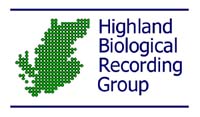 Skye falls within the area of the Highland Biological Recording Group, HBRG, founded in 1986 to stimulate public interest and involvement in biological recording; collect data on Highland wildlife through surveys; publish the results; maintain a directory of local specialists and recorders; transfer data to and from National Recording Schemes.
Skye falls within the area of the Highland Biological Recording Group, HBRG, founded in 1986 to stimulate public interest and involvement in biological recording; collect data on Highland wildlife through surveys; publish the results; maintain a directory of local specialists and recorders; transfer data to and from National Recording Schemes.
The HBRG welcomes records from the Scottish Highlands (of any species, not just molluscs) from any who visit the region - details of how to submit records, are in the web site at www.hrbg.org.uk. The group shares its records with national recording schemes, so if you already submit mollusc records to the Conch. Soc. Non-marine Recorder (which I hope you do) you can be sure they will be passed to the HBRG.
There are at least five reasons to submit mollusc records for the Highlands:-
- The area (larger than Wales but with a very small population is under-recorded) is under recorded, so we have our work cut out trying to cover the whole region. There are some odd gaps in the mollusc distribution map. Surely there are more Tandonia budapestensis (Budapest slug) & T. sowerbyi (Sowerbys slug) out there? It's not as if we don't grow root vegetables in the Highlands!
- A large number of recent Scottish records have been recently received by the Conch. Soc. Non-Marine Recorder and will be uploaded onto the NBN website. However for many species, even common ones like Oxychilus alliarius or Arion ater , more records are needed to build up a picture on trends or current distribution.There are previously unsurveyed sites e.g. ancient semi-natural woodland which have turned up Malacolimax tenellus (Black Isle) and Limax cinereoniger (Skye & Easter Ross) over the last couple of years. There are probably some interesting coastal species too, and of course, the possibility of who knows what in some of the montane habitats.
- Some of the rarer spp like Arion owenii (One Highland record from Chris De Feu at Portree, Skye) could well be present but completely unrecorded - it's an undiscovered country.
- Autumn in the Highlands is superb for fungi and hence mycophagous molluscs. Agriculture up here is also less intense than elsewhere in Britain so there are lots of opportunities to look at grassland species. And contrary to Dr Johnson, it's not all peat bogs in the Highlands – there are plenty of base-rich flushes, many of which haven't been studied for molluscs.
There are now 125 members of the group, mostly living in the Highlands but several come from as far south as England and visit the Highlands from time to time. HBRG organises various field visits during the summer and has short-term and ongoing recording projects into some species groups. Membership is only £6 per year and members receive, annually, a copy of 'Highland Naturalist' which gives results of various surveys and carries articles about a wide variety of species.
We look forward to welcoming you to the Highlands.
